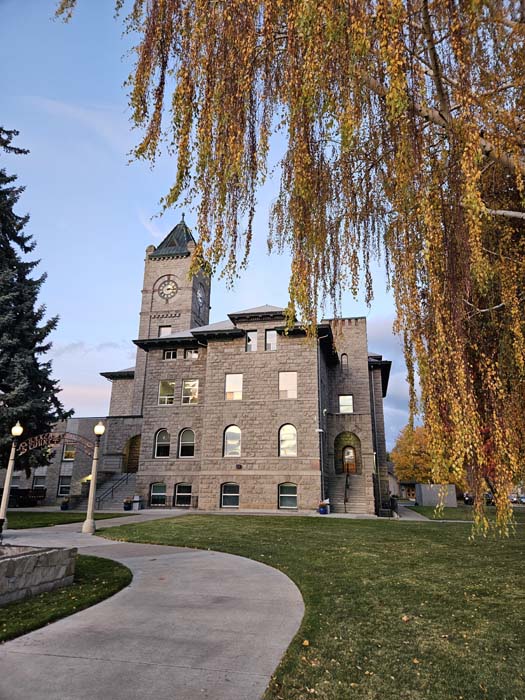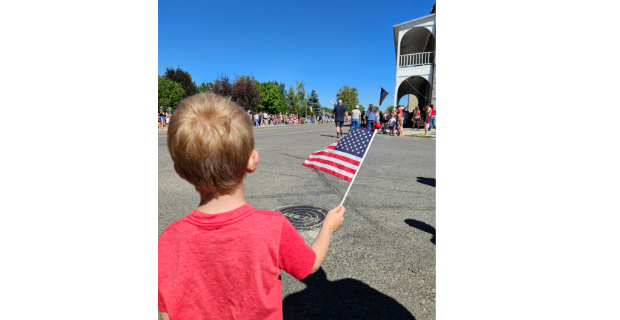Trail Rating Trouble
Published 2:10 pm Friday, June 16, 2017

- Jayson Jacoby/WesCom News ServiceBaker Valley from the Dutch Flat trail.
Trying to decide which hiking trail is my favorite seems to me a distasteful business.
Not quite so distasteful as picking a favorite among my kids, certainly, but a grim exercise with a similarly bitter flavor.
I deal with this conundrum as a coward might, or an obstinate child.
I simply refuse to answer.
Which is not to say that I plead the hiker’s version of the Fifth Amendment whenever an acquaintance asks me for advice on which trail to try.
In fact when it comes to the Elkhorn Mountains, the range I know best, I will without hesitation name what I believe to be the best trail in the Elkhorns.
“Best,” in this case, however, is not synonymous with “my favorite.”
Both are subjective definitions, of course.
But when I deem the Dutch Flat trail as the Elkhorns’ number one destination what I mean is this: Based on my own experience, and on what I think the typical hiker relishes about a trail, Dutch Flat is likely to give the greatest percentage of hikers the greatest amount of joy.
This 10-mile path is not the most scenic trail in the Elkhorns, at least as that adjective is most commonly employed.
That honor must go to the 24-mile Elkhorn Crest National Recreation Trail. As its name implies, that trail, for most of its distance, runs near the crest of the Elkhorns and so the views are expansive.
The Dutch Flat trail’s chief attraction, by contrast, is its variety. No other trail in the Elkhorns examines so thoroughly the mountains’ many faces.
The trail’s eclectic nature owes much to its length and to its location. Dutch Flat is not only the second-longest trail in the Elkhorns (again, trailing only the Crest Trail), but it’s among just a few paths in the range that start in a dense, mixed-conifer low-elevation forest, follow a major canyon to its head and conclude in the alpine zone where only scattered whitebark pines and subalpine firs can survive.
Most of the other major drainages on the east side of the Elkhorns — the North Powder River, Rock Creek, Pine Creek — have a road along their namesake stream rather than a hiking trail.
But Dutch Flat Creek has remained relatively undeveloped.
Although the trail is not officially inside a wilderness area, it has always seemed to me about as wild a place as exists in the Elkhorns.
The lack of motor vehicles contributes to this atmosphere, of course, as does the dense forest that crowds the trail for much of its length.
The primeval nature of the canyon is obvious within the first couple hundred yards from the trailhead, as the path winds among old growth ponderosa pines with their thick, vanilla-scented bark (some nostrils insist the closer comparison is cinnamon).
You’ll hear Dutch Flat Creek several minutes before you first see it. The stream thunders through a boulder-choked gorge, the roar echoing off the canyon walls. Before it reaches the gorge the trail contours along a south-facing slope, where lupine, penstemon and paintbrush bloom.
The trail, which is about 100 feet above the whitewater (a rough game trail drops precipitously to the stream’s edge) climbs briefly, veering away from the creek, before dropping slightly and resuming the roughly parallel course with the stream that continues for the next five miles or so.
The path crosses Van Patten Creek at about three miles, then continues climbing toward Dutch Flat, the creek’s and canyon’s namesake meadow, at about 7fi miles.
Dutch Flat is a classic alpine grassland covering several acres. In the Elkhorns it is rivalled in size only by Crawfish Meadow, a few miles away across the Elkhorn Crest on the west side of the range.
Dutch Flat Creek meanders through in the proper manner of a mountain stream, placid and glassy, the water so crystalline it’s easy to spot the brook trout.
I once landed a nice pan-sized brookie here, baiting the hook with a scrap of bright-red cotton I snipped from my chamois shirt.
(Perhaps a bit of explanation is in order. I had no proper fishing gear with me, but at the time I owned a survival knife — the sort of implement Sylvester Stallone would brandish in a movie — which I had bought at a military surplus store. The knife’s hollow handle was packed with a variety of gear, including a length of fishing line and a couple of hooks. But no worms, which tend to dry out when confined to the hollow handle of a survival knife.)
Beyond the meadow the trail climbs, still gently and with an occasional switchback, for about a mile and a half to the junction with the short (eighth of a mile) spur trail to Dutch Flat Lake.
There are several well-established campsites, mainly on the lake’s eastern shore.
From the lake the trail continues to climb, through a textbook alpine landscape of granite outcrops, small brooks of frigid water and stringer meadows with wildflowers, for a little more than a mile to the trail’s end at its junction with the Elkhorn Crest Trail in Dutch Flat Saddle.
Although it’s a river of water that flows down the Dutch Flat canyon today, the canyon itself was sculpted mainly by ice.
There were two major periods of glaciation in the Elkhorns — from about 150,000 to 200,000 years ago, and from 10,000 to 30,000 years ago, according to research by students and professors at several universities in the 1990s. In both periods, a glacier in the Dutch Flat canyon extended for between seven and eight miles.
The U-shape of the canyon, characteristic of glaciers, is especially apparent from an airplane or from a virtual (and generally less expensive) flight via Google Earth.
(Valleys formed solely by rivers, by contrast, tend to be V-shaped.)
The Dutch Flat trail reminds me, in a way no other trail in the Elkhorns does, of a path in the Eagle Cap Wilderness.
As with many routes in the Eagle Cap, the Dutch Flat trail starts at a relatively low elevation (about 4,900 feet), follows a stream, climbs in mainly gentle to moderate grades, and eventually swaps conifer forest for much more open, and picturesque, alpine terrain.
I don’t mean to imply that this means it’s my favorite trail.
But it might be.






